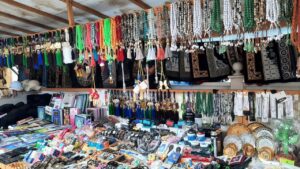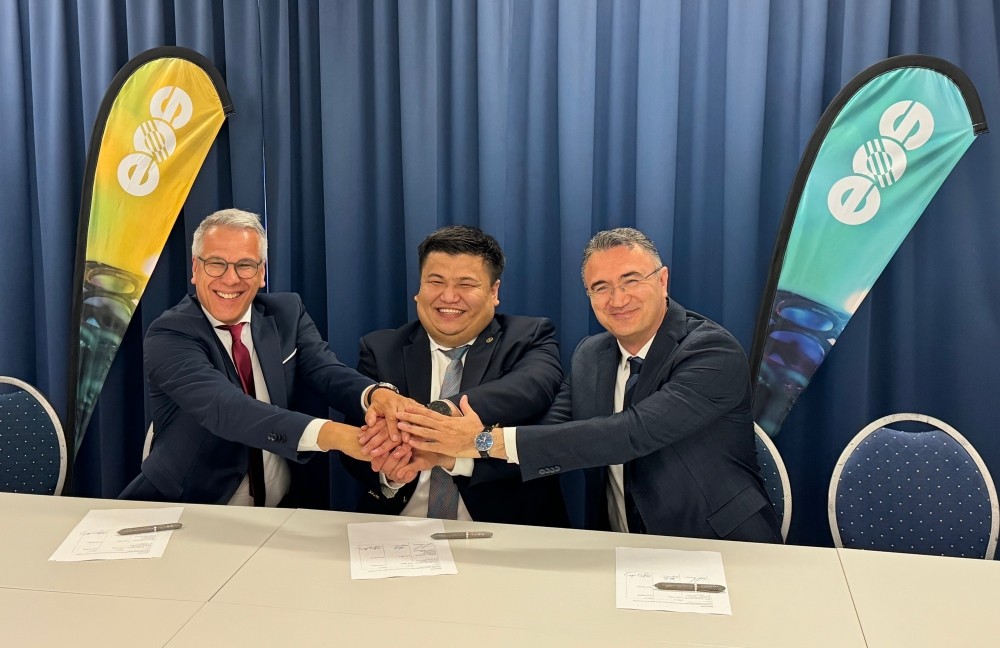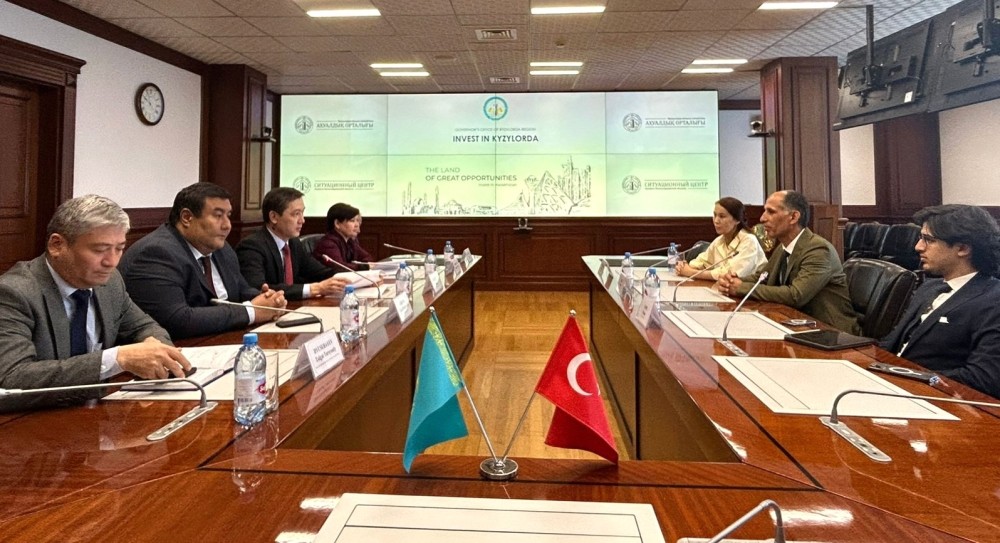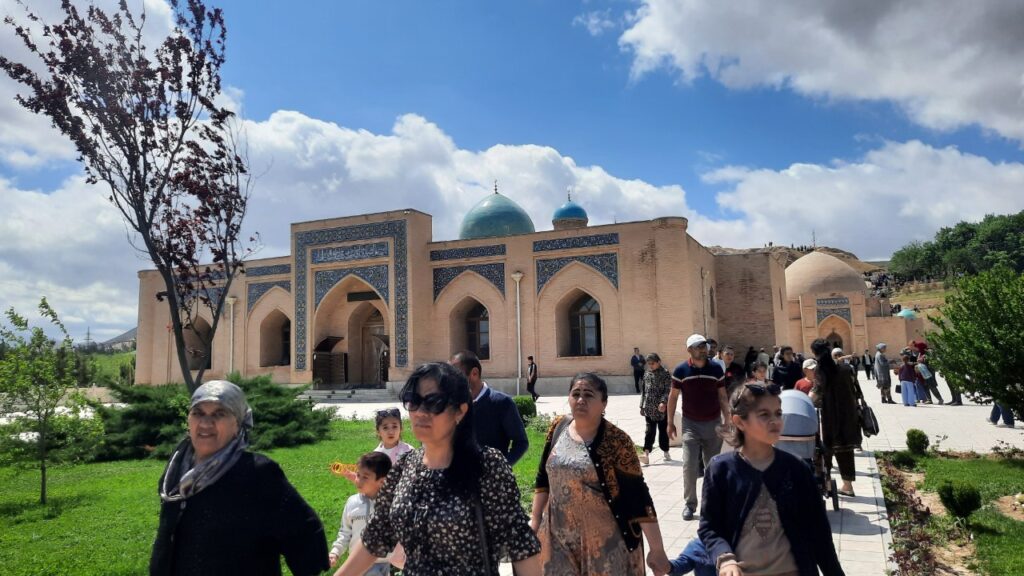It’s Sunday morning, and a nice breeze is blowing. Due to favorable weather, many people are paying a visit to the Chashma complex in Nurota, in the Navoi region of Uzbekistan. The complex is one of the most visited holy places by Central Asian Muslims, and thousands of tourists from all over the world flock here every year. The Times of Central Asia decided to see how popular the tourist spot is.
This historical complex includes the Chilustun Mosque, the Chashma Spring, the Panjab (Beshpanja) Well, the Panjvaqta Mosque, and Sheikh Abul Husan Nuri Mausoleum. The people of Nurota district mainly speak Tajik, in which the word Chashma means “holy spring.”
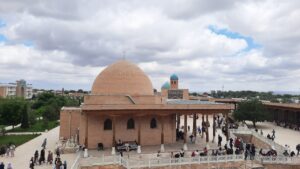
In the 9th century, the Chilustun Mosque was built at Chashma; it was rebuilt in the 16th century during the rule of Amir Timur. The mosque, erected near the holy spring, has a dome-shaped sundial with cylindrical windows, which sits in the heart of the mosque. In addition, the art of wood carving and other examples of Central Asian national decoration were skillfully used in the construction of the mosque.
Panjvaqta Mosque is located next to Chilustun. This mosque was built between 1570 and 1582 upon orders from Abdullah Khan II, the Emir of Bukhara. Today, the building consists of a large dome with two-sided porticos. All of its columns are made of mulberry and elm wood, and the base is made of marble.
The main focus of visitors is the Chashma Spring. Local resident, Zilola Safarova has said that 40,000 years ago, a meteorite fell from the sky in this place and radiated light for a hundred days. As a result of the meteorite, a crater was formed and a holy spring with healing properties appeared. The people of Nurota believe this legend, and many are of the opinion that the name Nurota is related to this event.
Chashma’s water flows through thousands of kilometers of underground passages at a rate of 290 liters per second, and the temperature of its water remains constant in all seasons of the year at 19.5° Celsius. The spring’s highest recorded flow rate was 400 liters per second. Furthermore, Chashma’s water is said to have healing properties. It was found that it contains trace amounts of gold, which is said to be a cure for gastrointestinal diseases. It has long been known that iodine in water is a cure for goiters, and rare bromine is known as a cure for nervous disorders. Meanwhile, silver contained in the water ensures that its mineral composition is well preserved. Microbiologists say that this holy water contains 15 useful trace elements which have the ability to calm a person and may have a positive effect on the body.
If one pays attention to the entire picture here, there are fish in the Chashma, which are called river marinka. These fish have an average lifespan of 17 years, and clean the streams from which spring water emerges out of sand. That sand ensures a moderate flow of water, and filters it. In addition to the river marinka, the Times of Central Asia saw several other types of fish. It’s an interesting sight to see fish live without any external food, feeding only on microorganisms and minerals contained in the water. Pilgrims and tourists are prohibited from feeding the fish and polluting the water.

Local residents say it was eating this fish which caused the death of Russian soldiers at the beginning of the last century. Despite being warning against it, they caught and ate fish from the spring and died immediately. It’s true that these fish cannot be eaten as they have a black membrane inside, and their caviar is poisonous. If one eats a little without cleaning it, it causes spots on the skin, and if one eats more, one may die.
There is also a small market inside the shrine, which mainly sells souvenirs, scarves, rosaries, children’s clothes, spices and snacks. The prices are very cheap, as is customary across Uzbekistan’s tourist spots – women’s bracelets sell for between $0.39 and $1-$1.5, and children’s clothes from $1 to $4. There are now two hotels on either side of the entrance to the shrine, which has made it convenient for tourists coming long distances to exploring the Chashma complex.
